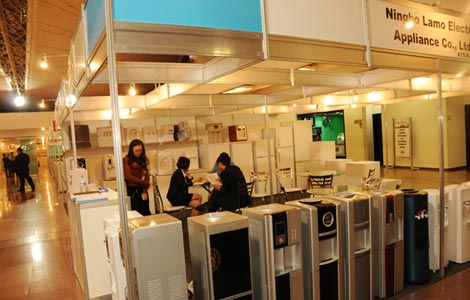Climate change impacts heat up UN talks in Lima
Updated: 2014-12-02 14:11
(Agencies)
|
|||||||||
The negotiators in Lima are focusing on a draft agreement that can be refined before the Paris meeting a year from now.
A key issue is what data each government should provide so that formal emissions targets can be compared.
Developing countries also want rich nations to make good on promises of financing to reduce emissions and mitigate climate change impacts, which range from the spread of diseases to coastal flooding to major disruptions to agriculture.
There's no common agreement on how that money should be used; for example, The Associated Press found that Japan has spent $1 billion of its climate financing on new power plants in Indonesia that burn coal _ the top source of man-made emissions. Japan says it improves the environment because the new plans burn cleaner, but critics said coal has no place in climate financing.
The UN's weather agency is expected to present temperature data showing 2014 could be the hottest year on record.
Peru is among the countries most affected. The Andean nation has 70 percent of the world's tropical glaciers, which have lost more than a fifth of their mass in just three decades, putting 300,000 highlanders under severe stress as pastures and croplands dry up, the planting cycle becomes more erratic and cold snaps more severe. Lima is the world's second-largest desert capital after Cairo, Egypt, and its 10 million inhabitants depend on glacial runoff for hydropower and to irrigate crops.
Latin America and the Caribbean cause less than 10 percent of global emissions, and yet its people are already shouldering and oversized burden. Climate change is blamed for the extinction of plants and animals in Andean cloud forests and for damaging offshore fisheries. Even if warmer weather benefits industrial agriculture in some places, more people are expected to go hungry as subsistence farming suffers.
The regional economic damage from all this will reach $100 billion a year by mid-century, according to research done for the Inter-American Development bank.
"The people with the least intensive climate lifestyles are suffering the most," said geographer Jeffrey Bury of The University of California at Santa Cruz, who studies the social and economic impacts of glacier loss.
"I think we can use the Andes high mountain environment," he said, "to understand what the future holds for the rest of us."
- Climate summit meets in Lima
- Global warning entails a quicker Lima deal
- Opinion: Global warning entails a quicker Lima deal
- Clock ticking, UN climate talks resume in Lima
- UN climate talks may draft new international deal
- Climate finance rules still allow coal plants
- Xi, Obama set great climate example
Most Viewed
Editor's Picks

|

|

|

|

|

|
Today's Top News
New visas a boon to real estate
China records 497,000 people with HIV/AIDS
Ailing school district seeks Chinese help
Web options proliferate for Chinese shoppers
Artists seek US audiences
Alibaba, Amazon in online battle
HK protesters clash with police outside govt headquarters
Cross-border e-commerce booming
US Weekly

|

|
















